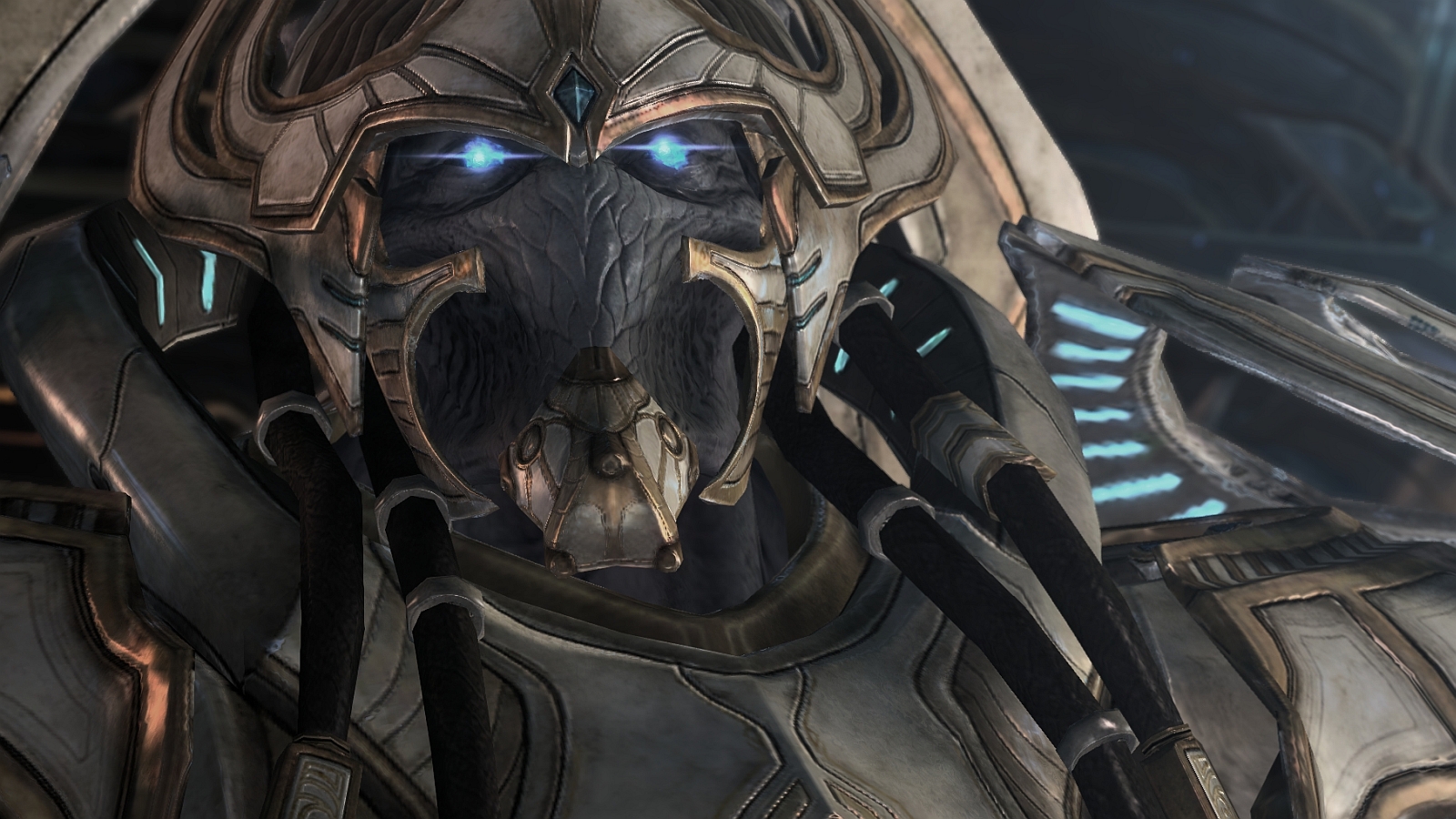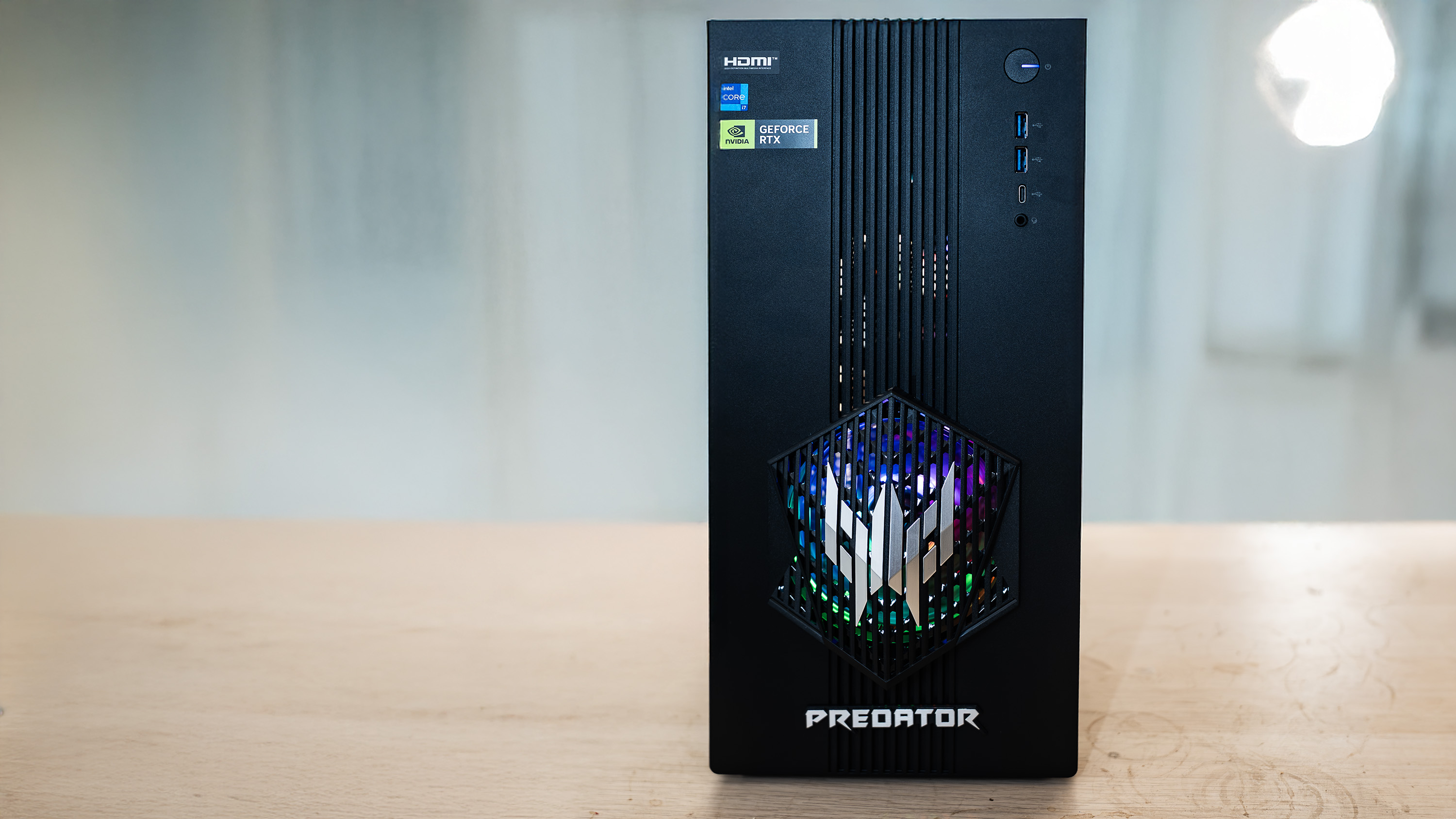Our Verdict
A brilliant strategy game that manages to be both broad and deep, challenging and accessible.
PC Gamer's got your back
What is it? The fifth entry in Blizzard’s sci-fi RTS series, and the conclusion of its story.
Expect to pay $40/£30
Release Out now
Developer Blizzard
Publisher In-house
Multiplayer Co-op and competitive, extensive options.
Link Official site
I am not the world’s greatest StarCraft player. That—currently—is a guy called sOs. You might have heard of him: he was the one lifting that heavy-looking trophy at the World Championship at BlizzCon. sOs became the world’s greatest StarCraft player by defeating somebody called Life in a seven-game series—a test of physical dexterity, mental acuity and psychological endurance in excess of any other competitive computer game.
StarCraft’s competitive element has become the thing it is best known for over the course of the series’ long life. That makes sense: it’s the original stadium-filling esport and one of the most skill-intensive games ever made. For the long-term fans who know StarCraft primarily in this regard, Legacy of the Void marks the start of the game’s new era. It’s a suite of new units, features and balance changes that will define the character of the game for the next couple of years.
From my position of limited skill, I can tell you that Legacy of the Void’s changes make the competitive game faster, more skill-intensive, and less fiddly. There’s a greater emphasis on making big decisions early. You begin your match with more worker units than you used to, and the business of setting up your economy has been streamlined. Fights happen faster and, as a consequence, matches are shorter. You might get caught out by a rush strategy you didn’t see coming: you type ‘GG’, surrender, tab out to TeamLiquid, read up on your counters, tab back, and you’re playing again within a minute. It is easier than ever to lose evenings to the ladder in this way.
That elevated skill ceiling is thanks to new units that become dramatically more powerful if you’re capable of micromanaging them effectively. One example is the Protoss Adept, a ranged infantry unit that can act as an alternative to Stalkers and Zealots. In and of itself, it’s capable enough—but it’s real power comes from Psionic Transfer, which creates a ghostly duplicate of the Adept that is controlled separately. These are invulnerable and after seven seconds the Adept teleports to the ghost’s location. Suddenly, new strategic pathways open up: around entrenched positions and into worker lines, past the enemy’s own targeted abilities and (hopefully) into victories that go beyond cheeses and strict counters.
Legacy of the Void wholeheartedly supports the notion that StarCraft is a difficult game and that player skill should be respected. If you get too tired or anxious to climb the ladder, there are also automated tournament brackets that run every couple of hours. These allow you to experience some of the drama of structured play without any of the logistical hassle. You’re playing for bragging rights, ultimately, but it rounds out the experience and it’s something that I wish more competitive games would offer.
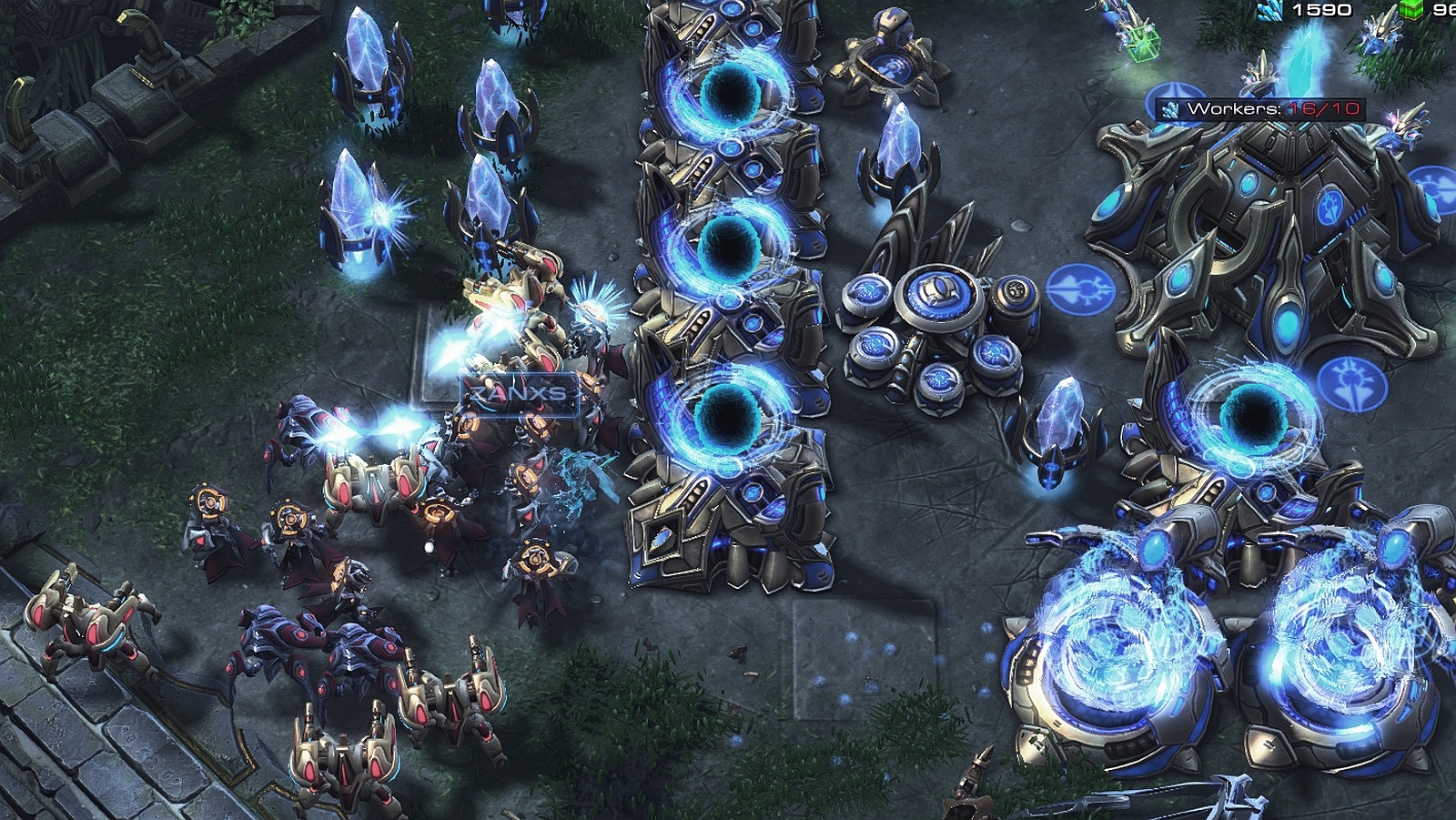
The reason Legacy of the Void comes highly recommended, however, is that it also supports the idea that you should be able to have fun regardless of how good you are. The competitive game has been allowed to change in ways that make it deeper, but the package as a whole is broad and generous in its provision of entry points for new players.
If competitive StarCraft has become an art, then Legacy of the Void’s campaign offers a colour-by-numbers alternative for those still developing their abilities. As in Wings of Liberty and Heart of the Swarm, Blizzard treat singleplayer as its own entity, with its own units and rules. The final part of the trilogy tasks you with uniting the fragmented factions of the Protoss race from aboard an ancient warship, the Spear of Adun. Your ship and the factions you pick up form the basis of the extra toys you get to play with. Where James Raynor had his upgrades and Kerrigan had her mutations, Protoss Hierarch Artanis picks between multiple versions of the same unit type. There are Templar and Dark Templar variants on the basic melee zealot, for example, with further options unlocked as additional Protoss forces are recruited.
Keep up to date with the most important stories and the best deals, as picked by the PC Gamer team.
Then, the Spear of Adun itself can be upgraded by investing resources gathered by completing optional objectives within each mission. Some of these upgrades are passive, such as increased build speed, increased starting supplies, and shield regeneration. Others are active, deployed mid-battle from a new command interface along the top of the screen. These include direct attacks—orbital strikes, bombardments, a giant moveable laser, and so on—and support powers, like the ability to freeze time for enemy units or summon a Pylon along with reinforcements anywhere on the battlefield. They’re wildly overpowered but mitigated by cooldowns and a recharging energy meter, acting as both siege-breaking opening gambits and last-ditch survival options.
Taken in combination, this degree of customisation allows you to tailor your approach to suit your style and skill level. I prefer a slow siege, with Stalkers supported by forcefield-emitting Sentries and, later, Immortals and Colossi. I put together a tweaked variant on that, with artillery-spewing Immortal variants protecting a new kind of Sentry that lays down a power grid, allowing me to warp fresh Stalkers right to the front line. As the scale of each mission increases, there’s a real thrill to seeing a plan like this come together: the glow of dozens of protoss units warping in at once, the angry red beams of custom Void Rays strafing waves of zerglings that pop just so.
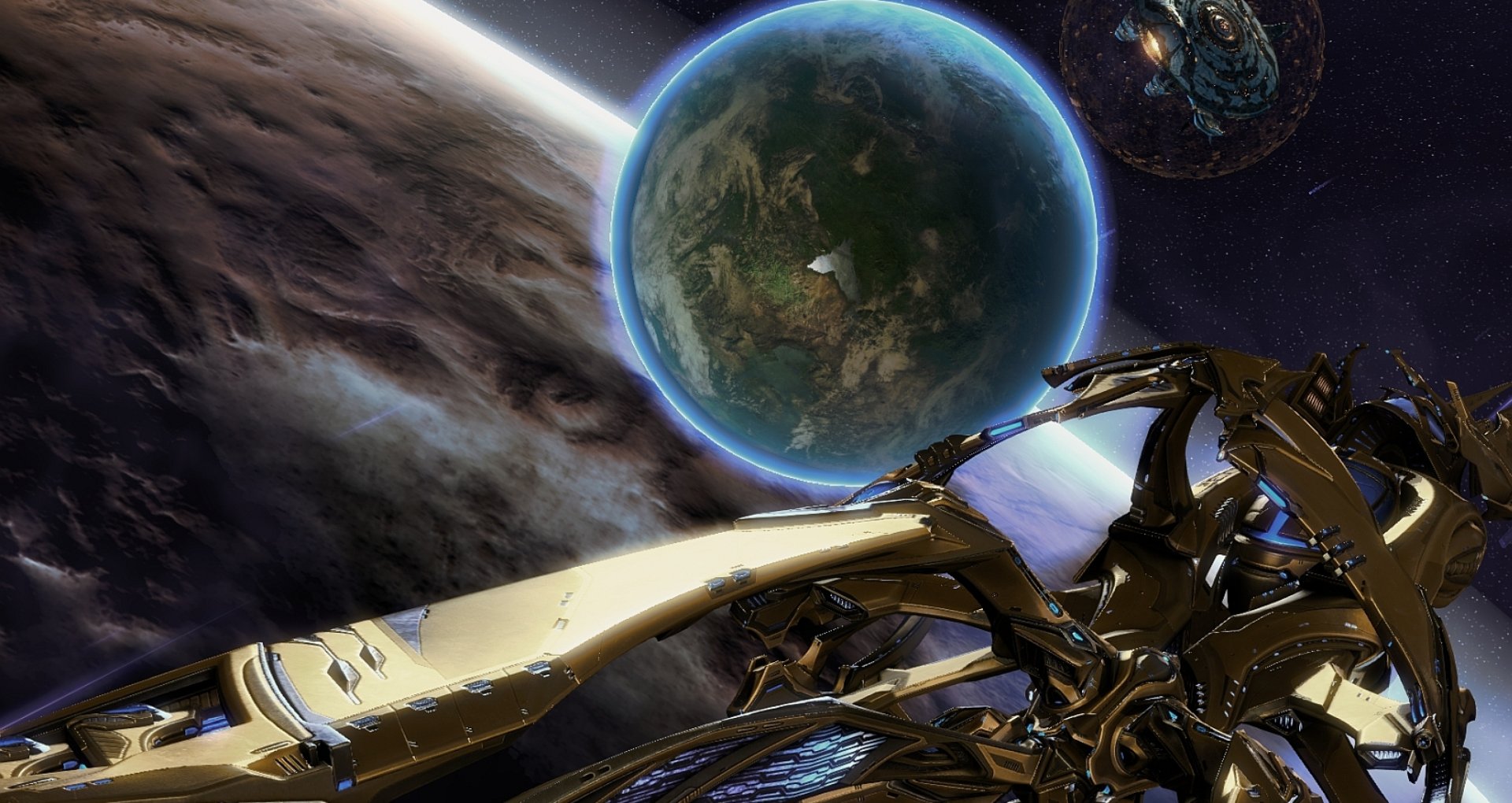
After over five years of StarCraft II, the new missions don’t manage to feel quite as fresh or original as Wings of Liberty’s did when it came out. Though I wouldn’t say there were any especially weak links, certain objectives get repetitive after a while. You will track down and destroy three different objectives while also hunting for two or three different optional objectives on several worlds and in several different contexts, albeit with new units and powers to prevent each encounter from feeling exactly the same.
There are certainly exceptions to this rule. One mission strands your base on a landlocked island with minimal resources, but allows you to move that island along rails to reach new areas. Another allows you to command three different squads of Protoss hero units in succession, completing multiple objectives at once in three different parts of a world. In another you join allied Terran forces in a battle against their corrupt counterparts. Every few minutes, a psychic blast leaves every Terran on the battlefield incapacitated—friends and foe alike. This is either an opportunity to lay waste to a defenceless enemy or time to defend your stricken ally depending on how ruthless you’re feeling. There’s rarely a mission where Legacy of the Void doesn’t innovate along these lines, but certain designs stand out more than others.
The core Protoss campaign is the shortest of the series so far, but it’s bookended by mini-campaigns that, collectively, amount to a substantial and largely gratifying conclusion to the series. The nebulous cosmic threat spoken of in cutscenes from Brood War onwards finally arrives, and is dealt with not just by the Protoss but by the Terran and Zerg characters that you’ve come to know as well. Raynor and Kerrigan get their ending, as do Zeratul, Artanis, and all of the other Protoss who (if you’re me) you’ve probably confused with each other over the almost two decades that Blizzard have been telling this story.
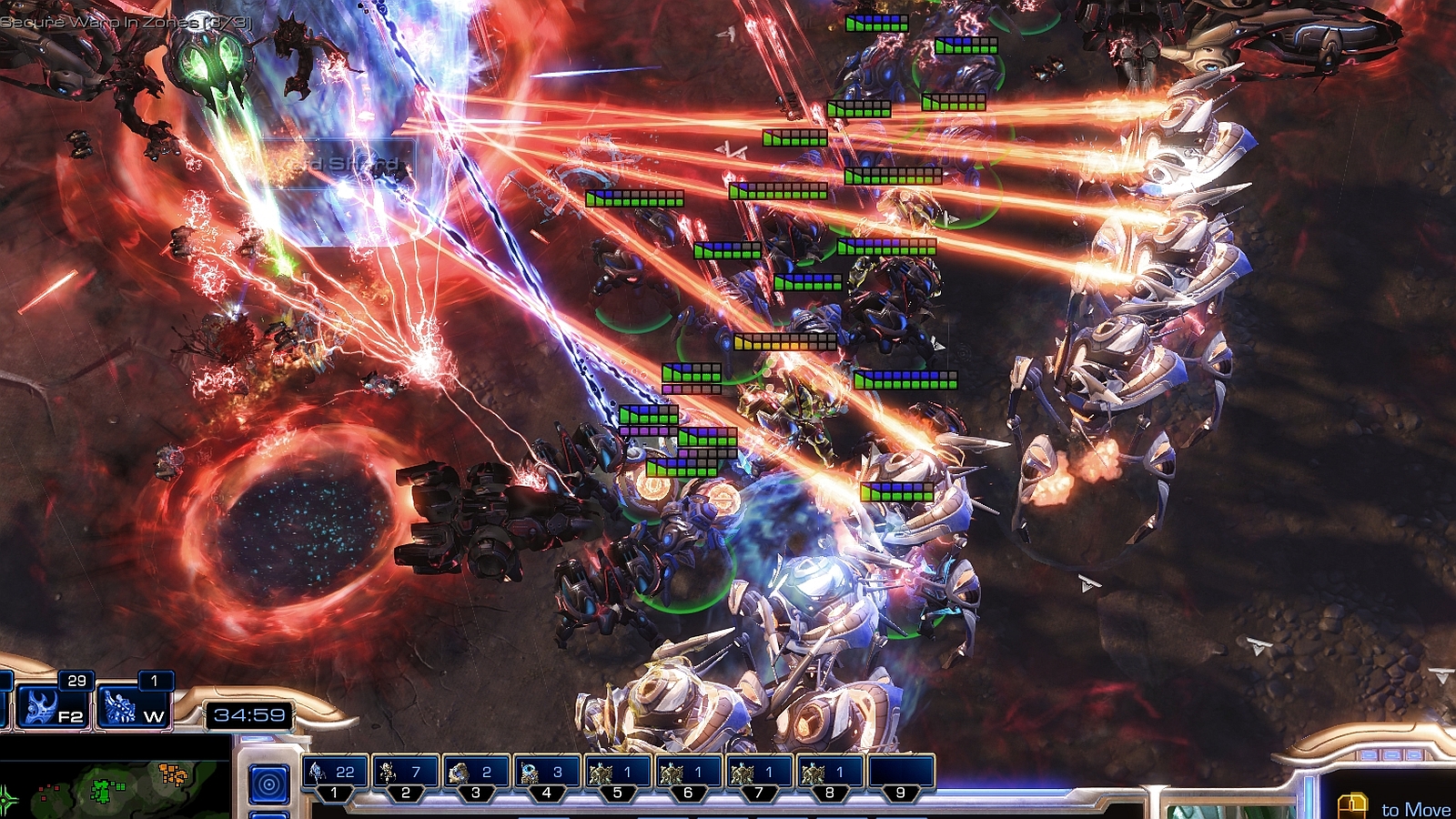
There was a risk that a Protoss narrative could end up feeling dry and this holds true to a certain degree. The Protoss are part elf, part Vulcan, part Marvel Comics Asgardian: they’re big and gold and Shakespearean and silly, and if you take the time to talk to everybody on board the Spear of Adun you’ll have more than your share of conversations about Templars and Nerazim and Tal’darim and the Khala and so on. Blizzard commit to this wholeheartedly and a huge investment has been made in furnishing the campaign with impressive cinematic moments. If you are a fan already, this is a party being put on to serve your very specific interests. If you are not, it may mean very little if you haven’t at least played Wings of Liberty and Heart of the Swarm. Nonetheless, it has heart: that loud technicolour exploding metal album cover heart that finds its way into most Blizzard games.
For the first time in StarCraft II, some of that freeform campaign feel makes its way into multiplayer. In co-op, you and a friend (or an online stranger) pick commanders that each offer a different spin on their faction, complete with unique special powers and distinct units. You then take on objective-based missions at varying difficulty levels for XP, which unlock new abilities, units, and so on. This is a brilliant addition: it gets more life out of units designed for singleplayer, and provides a welcoming way into multiplayer for those daunted by it.
As an introduction to the game, co-op is actually more effective than Archon mode despite the latter getting the loudest fanfare from Blizzard. Archon is a new competitive two-vs-two format where both players control a single army. When both players are equally skilled, this is pretty entertaining—a way of taking the pressure off each individual by having one brain to look after the army and another to look after the base. With a newcomer, however, I don’t really think it works—it feels too much like teaching somebody by doing everything for them, where co-op (and traditional two-vs-twos) both allow newbies to work with all of the game’s systems themselves.
These weaker moments don’t spoil the whole, however. Legacy of the Void feels like a Blizzard game from another era—one where the box you buy (or download, I guess) contains a wide variety of experiences and promises to sustain investment for a long time to come. This is a game from the universe where the RTS never went away, where they kept getting made and improved over the course of decades. I’d say “they don’t make them like this any more”—but they clearly do.
A brilliant strategy game that manages to be both broad and deep, challenging and accessible.
Joining in 2011, Chris made his start with PC Gamer turning beautiful trees into magazines, first as a writer and later as deputy editor. Once PCG's reluctant MMO champion , his discovery of Dota 2 in 2012 led him to much darker, stranger places. In 2015, Chris became the editor of PC Gamer Pro, overseeing our online coverage of competitive gaming and esports. He left in 2017, and can be now found making games and recording the Crate & Crowbar podcast.
